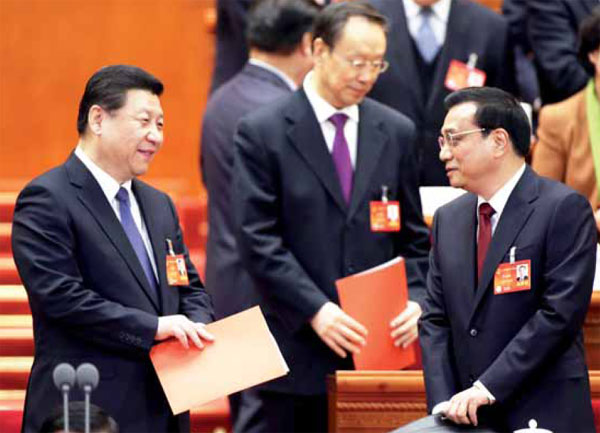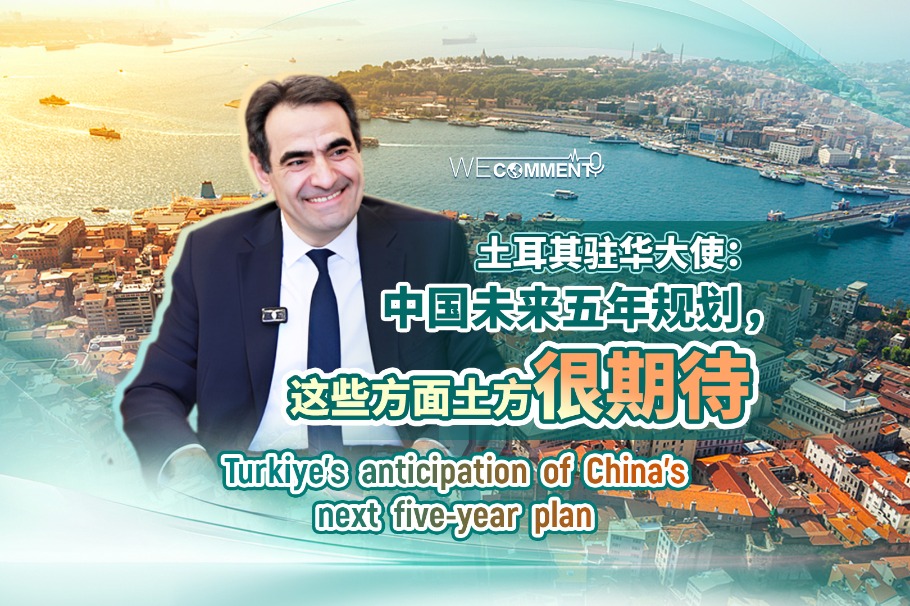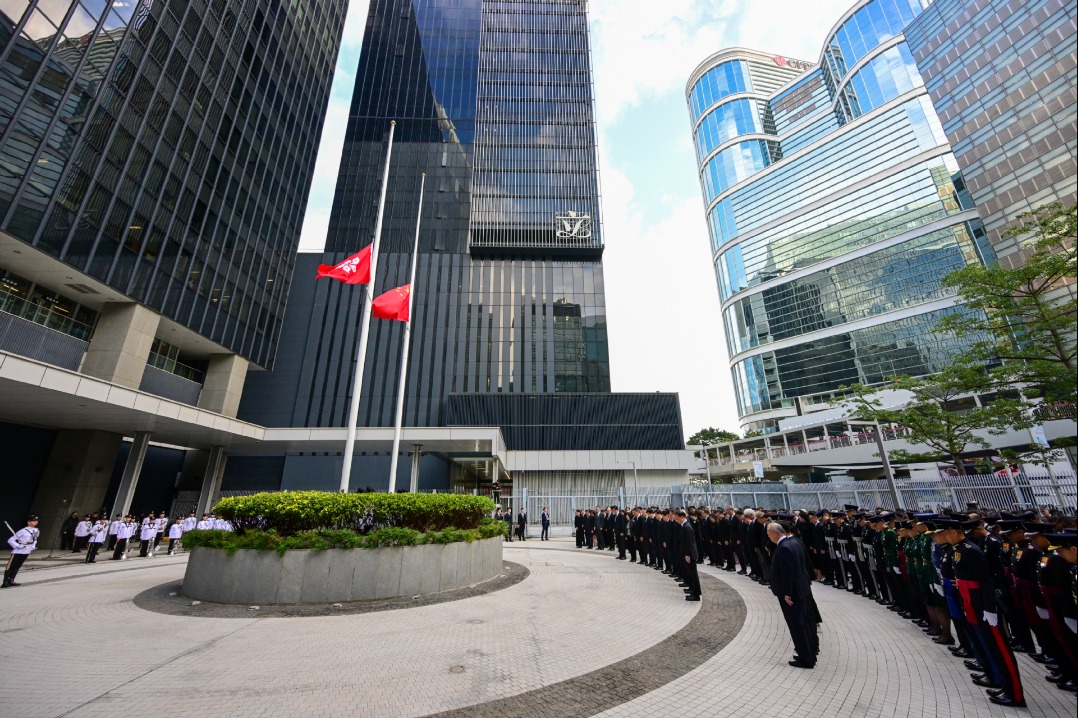IN BRIEF (Page 2)

Race on for hub status on Maritime Silk Road
China's coastal provinces are trying to become the key hubs along the new "Maritime Silk Road", a national initiative aimed at strengthening cooperation with the Association of Southeast Asian Nations.
Fujian is one of the areas that has been actively engaged in developing its ports, particularly the one in Quanzhou, a city recognized by the United Nations Educational, Scientific and Cultural Organization as the starting point of the maritime silk road, said Zheng Xincong, mayor of Quanzhou.
"Although the pertinent authorities are still doing research to decide which provinces will be involved, Quanzhou is in full swing to upgrade the ancient port," Zheng said, adding that improving the port's customs clearance is high on the agenda of the local government.
With current cargo capacity of more than 1.7 million TEUs, or 20-foot equivalent units, the Quanzhou port has embarked on a large infrastructure development program to increase total capacity.
The port, at an important location on the sea transport network, has opened about 130 shipping routes, establishing trade with 28 countries and regions that include Indonesia and the Philippines.
Proposed rail line to link Lhasa, Nyingchi
Construction is set to begin this year on a railway linking Lhasa and Nyingchi prefecture in the Tibet autonomous region, top Tibetan officials said on March 5 in Beijing.
Lobsang Jamcan, chairman of the Tibet autonomous region, told Tibetan deputies to the National People's Congress that the government is "preparing to begin building the Lhasa-Nyingchi railway".
He said construction on the 253-km-long Lhasa-Xigaze railway that began in September 2010 is finished and that the railway is expected to begin operations this year.
The new line will cost an estimated 30 billion yuan ($4.9 billion; 3.5 billion euros).
President to visit Europe this month
President Xi Jinping will make his first trip as head of state to Europe "a priority for China's diplomatic agenda this year" later in March to "open a new chapter" in Sino-European relations, China's top diplomat said on March 8.
"Cooperation is the key word in relations between China and Europe, and both sides will work to align their respective developmental strategies during Xi's visit," Foreign Minister Wang Yi said.
"This is especially the case when China's development-model transition gains momentum, and has embarked on comprehensive and in-depth reforms," Wang said at a news conference during China's annual parliamentary sessions.
Wang highlighted priorities such as science and technological innovation, energy and environmental conservation, a new type of urbanization, connectivity, and people-to-people and cultural exchanges.
Life in Shanghai costs more than New York
Shanghai has climbed to No 21 on the world's most-expensive city list, overtaking New York for the first time, according to a global cost-of-living survey.
The Economist Intelligence Unit measured the cost of living in 131 global cities, using New York as the base. With a score of 101 against New York's 100, Shanghai rose nine places from last year.
All Chinese cities moved higher on the index, with Shanghai seeing the fastest rise. Five years ago, the city was ranked 45th.
Hong Kong took fifth place in Asia and 13th in the world. Shenzhen was the second-most-expensive Chinese mainland city in 39th place.
Singapore overtook Tokyo as No 1 on the list, driven by a strong currency and high transport costs. Mumbai was the cheapest.
Cities fail to meet national air standards
Only three of China's 74 major cities met national air-quality standards last year, a senior official said.
The government set PM2.5 limits for the first time in 2012. PM2.5 refers to particles smaller than 2.5 micrometers in diameter, which are considered extremely hazardous since they penetrate deeper into the lungs than larger particles.
Wu Xiaoqing, vice-minister of environmental protection, said all the cities except Hainan province's capital Haikou, Zhejiang province's Zhoushan and the Tibet autonomous region's capital, Lhasa, exceeded the standard in 2013.
Beijing and its neighbors Tianjin municipality and Hebei province experienced the heaviest air pollution last year, when PM2.5 levels averaged 106 micrograms per cubic meter, ministry data showed.
Dialogue called foron Ukraine crisis
Beijing is open to any constructive proposal or suggestion that can help ease tensions in Ukraine, President Xi Jinping told his US counterpart Barack Obama on March 10 in a phone call on the crisis.
Xi called for all parties concerned to remain calm and exercise restraint.
"China takes an objective and fair position on the Ukraine issue," Xi said, adding that the situation is of "great complexity". He urged the parties involved to settle differences through dialogue and to seek a political settlement.
Good year-end to secure 7.5% target
As positive economic factors are likely to emerge in the second half of this year, the 7.5 percent growth target set by the government will be met, scholars at the nation's top economic planning agency said on March 9.
"The positive factors will build up as time goes by. The economy will improve in the second half of this year, and guarantee the realization of the target for the whole year," said Song Li, deputy director of the Institute of Economic Research under the National Development and Reform Commission.
His remarks came as some economists have become increasingly doubtful whether China could achieve the 7.5 percent GDP growth set in the Government Work Report. China faces several challenges, including massive excess capacity in some industries, mounting local government debt, slowing growth in property prices and lurking risks in the financial sector.

Tiger protection breeds success
The number of Siberian tigers, classified as an endangered species, may finally be growing in the wild thanks to enhanced conservation methods.
"In January we found a tigress with three cubs," said Lang Jianmin, who is in charge of research into endangered tigers at the Hunchun protection zone in Jilin province, which covers an area of 108,700 hectares, and treks into the mountains every day to collect data from infrared cameras.
Improving habitat conditions in the protection zone are behind the revival of the Siberian or Amur tigers, he said.
In 1998, there were three Siberian tigers in the protection zone which was founded in 2001. Now it's possible that eight tigers are living there.
The zone's success led to two others being established, Wangqing in Jilin province and Laoyeling in Liaoning province.
All the zones have reported an increased number of images caught on camera and video as well as footprints and evidence of tigers preying on wild boar.
China Daily-Xinhua
| President Xi Jinping (left) and Premier Li Keqiang (right) at the closing meeting of the second annual session of China's 12th National People's Congress at the Great Hall of the People in Beijing on March 13. See more coverage on pages 4-11. Wu Zhiyi / China Daily |
(China Daily European Weekly 03/14/2014 page2)
Today's Top News
- Takaichi must stop rubbing salt in wounds, retract Taiwan remarks
- Millions vie for civil service jobs
- Chinese landmark trade corridor handles over 5m TEUs
- China holds first national civil service exam since raising eligibility age cap
- Xi's article on CPC self-reform to be published
- Xi stresses improving long-term mechanisms for cyberspace governance































